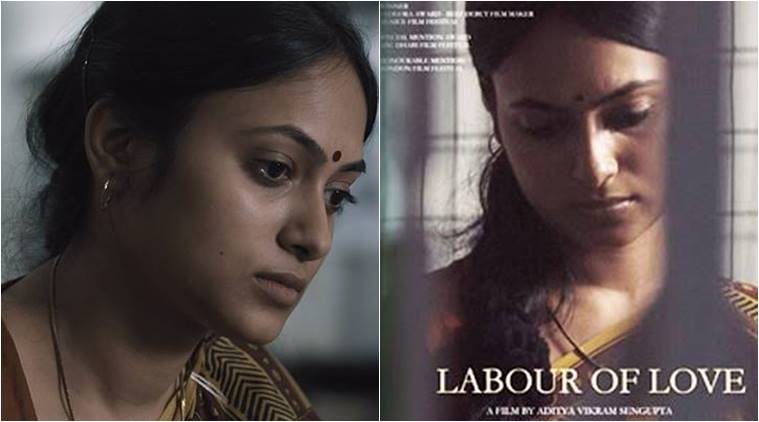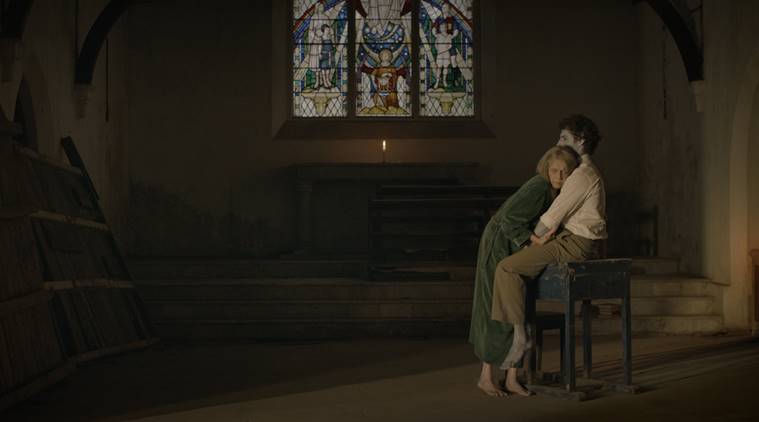 Slices of Life: Intricately woven in Jonaki’s story is the portrait of a bygone Kolkata, ageing and decaying.
Slices of Life: Intricately woven in Jonaki’s story is the portrait of a bygone Kolkata, ageing and decaying.
Before Aditya Vikram Sengupta’s 75-year-old grandmother passed away in 2010, she was in a coma for four days — her eyes were half shut and she mumbled under her breath. This made the writer-director wonder if she was going over her life. He was privy to her love, longings, pain and regrets. Often the bedtime stories she told him were about the charming life she had led as a member of the “now nearly-extinct class of affluent, aristocratic and Anglicised families”. She told him about the Christian boy she loved and how at the age of 16 she was forced to marry another man, his grandfather, with whom she shared a “cold relationship”.
A few months after he lost his grandmother, Sengupta began to have nightmares. Once he dreamt that his grandmother had telephoned him to tell him that it was the last call she was allowed to make from the crematorium before she was put on the pyre. There were also times he woke up in the middle of the night to the sound of explosions and gunshots, just the way she had described them to Sengupta from her memories of World War II. “They were very painful dreams. They brought out a feeling in me that’s very difficult to express. It is very different from the sadness or happiness we experience in the real world. Through the film, I wanted to articulate this,” says the 35-year-old filmmaker. The film’s title, Jonaki, which means firefly is inspired by “a Japanese folktale his grandmother had told him in which the souls of the dead turn into fireflies and wander into the forest”.
 Late Lolita Chatterjee in stills from Sengupta’s new film Jonaki.
Late Lolita Chatterjee in stills from Sengupta’s new film Jonaki.
Sengupta, who made an impressive debut in 2014 with the National Award-winning Asha Jaoar Majhe (Labour of Love), makes deeply personal movies. “I don’t make a film because I have to or because I consider myself to be a filmmaker. Since childhood, I dabbled with a series of things such as painting and music. I love reacting to things around me. As I grew up, cinema opened up to me as a form of expression. When I express myself through the canvas of the movie, I try to express something that can’t be communicated through any other medium,” says the writer-director whose movies are atmospheric and detailed explorations of space. This has helped him develop, what Rada Sesic, programmer of the International Film Festival of Rotterdam (IFFR), called “a specific style as a filmmaker” and create “visual poetry” on the screen. Jonaki, which had its world premiere at the IFFR under its Bright Future section earlier this year, premiered at MAMI Mumbai Film Festival under the India Gold segment last month.
Intricately woven in Jonaki’s story is the portrait of a bygone Kolkata, ageing and decaying. Sengupta shot the movie with Mahendra Shetty in old bungalows, mills and godowns of the city. Sengupta grew up in a red bungalow, which was built in 1911 in the Ballygunge Circular Road area. Two decades ago, when a dispute over the property arose, his family had to leave the bungalow overnight. “It was a setback for my family. Till date, no one has moved into that house. Today, the places we used to play in are covered with bushes and trees. My things are still there and I can still see my home. You can see an embodiment of time in these houses,” says Sengupta, who has snuck into the property on some occasions.
Even though he goes to the sets with a ready script, locations often present new cues, leading to tweak the script. “Painting and graphic design come naturally to me. I draw each scene of my film. Many times, after I have seen the location, I change the drawing,” says the graduate of National Institute of Design, Ahmedabad. After he graduated in 2008, Sengupta worked with Channel [V] till early 2011. Working on animation and ad films afterwards before he decided to write and direct his first movie with the money he had made till then.
Production designer Jonaki Bhattacharya, who is married to Sengupta, says, most of the locations used in the movie are popular with filmmakers. “A lot of action sequences of South Indian movies have been shot at these spaces. However, we have composed and treated these spaces differently. That apart, we had to match the texture of different locations, wall and props for a cohesive look,” she says. Another task for her was to match the texture of the costumes. Bhattacharya had set up an “ageing laboratory” where along with two assistants, who “looked like nerdy scientists”, she would work on giving artefacts, props and clothes used in the movie a period look.
For the titular role of Jonaki, Sengupta chose to cast the late Lolita Chatterjee, whose life he believes was similar to that of his grandmother’s. The actor, who succumbed to a cerebral stroke on May 9, entered the world of cinema as a child actor in the Bengali movie Ananya (1949). She later acted opposite Uttam Kumar in Bibhas (1964) and featured in some Hindi movies in the ’60s and ’70s. “Chatterjee, too, used to think of old times and was full of regrets. What appealed to us about her was the fact that she had very European features, so different from a regular Bengali lady,” says Sengupta, who had earlier approached French actor Emmanuelle Riva (famous for Hiroshima Mon Amour, 1959, and Amour, 2012) for the role. Even though Riva liked the script, she was suffering from cancer and declined the offer. Unlike his first movie, Jonaki has dialogues even though they are short and sporadic. “My idea was to retain the dream-like feel in the movie. My dreams never have dialogues. They just have some key words,” says Sengupta. The director adds that he uses words when he can’t find any other way to express what is on his mind. In Asha Jaoar Majhe, which follows the life of a Kolkata-based couple who work in different shifts and meet briefly during the day, he tried to capture the city’s soundscape while doing away with dialogues entirely.
With his next, Aquarium, Sengupta is moving away from the cinematic world he has presented so far. “I will start shooting the movie in January. It is character-driven and has a lot of drama and dialogues. It also follows the classical three-act structure,” says Sengupta, whose first sounding board is always Bhattacharya. “She is ruthless and very good at giving a reality check to the script. That helps me in writing,” says the filmmaker. The latest script, however, has not been a cakewalk. He had to rework the script to make the format more structured and the story detailed. “Yet, while writing the screenplay, it often keeps breaking itself, shaping the way I like to tell my stories. Maybe something interesting will come up,” he says.